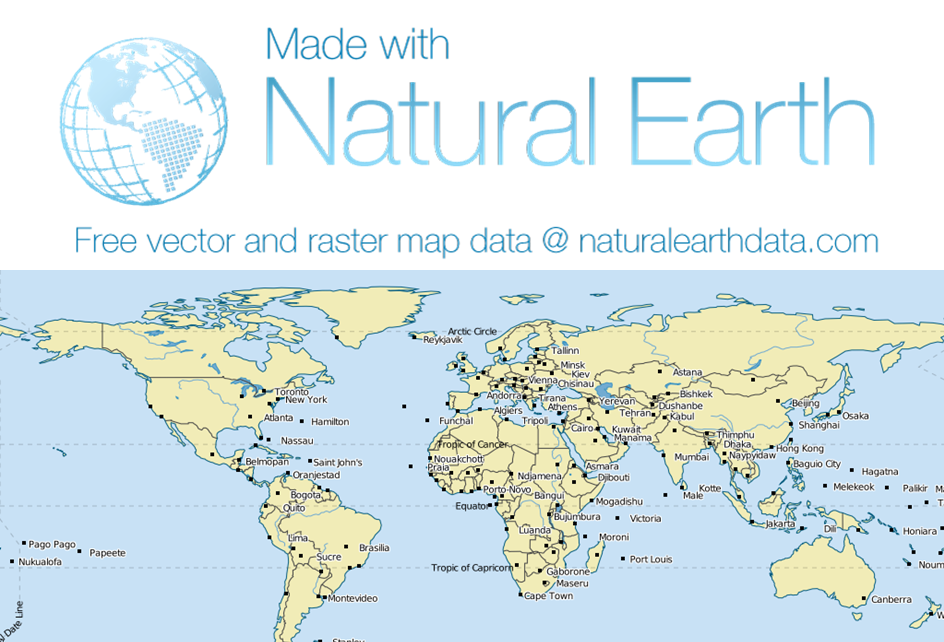10000000
Type of resources
Topics
Keywords
Contact for the resource
Provided by
Years
Representation types
status
Scale
-

Natural Earth is a public domain map dataset available at 1:10m, 1:50m, and 1:110 million scales. Featuring tightly integrated vector and raster data, with Natural Earth you can make a variety of visually pleasing, well-crafted maps with cartography or GIS software. Natural Earth was built through a collaboration of many volunteers and is supported by NACIS (North American Cartographic Information Society). Natural Earth Vector comes in ESRI shapefile format, the de facto standard for vector geodata. Character encoding is Windows-1252. Natural Earth Vector includes features corresponding to the following: Cultural Vector Data Thremes: - Countries: matched boundary lines and polygons with names attributes for countries and sovereign states. Includes dependencies (French Polynesia), map units (U.S. Pacific Island Territories) and sub-national map subunits (Corsica versus mainland Metropolitan France). - Disputed areas and breakaway regions - From Kashmir to the Elemi Triangle, Northern Cyprus to Western Sahara. - First order admin (provinces, departments, states, etc.): internal boundaries and polygons for all but a few tiny island nations. Includes names attributes and some statistical groupings of the same for smaller countries. - Populated places: point symbols with name attributes. Includes capitals, major cities and towns, plus significant smaller towns in sparsely inhabited regions. We favor regional significance over population census in determining rankings. - Urban polygons: derived from 2002-2003 MODIS satellite data. - Parks and protected areas: US National Park Service units. - Pacific nation groupings: boxes for keeping these far-flung islands tidy. - Water boundary indicators: partial selection of key 200-mile nautical limits, plus some disputed, treaty, and median lines. Physical Vector Data Themes: - Coastline: ocean coastline, including major islands. Coastline is matched to land and water polygons. - Land: Land polygons including major islands - Ocean: Ocean polygon split into contiguous pieces. - Minor Islands: additional small ocean islands ranked to two levels of relative importance. - Reefs: major coral reefs from WDB2. - Physical region features: polygon and point labels of major physical features. - Rivers and Lake Centerlines: ranked by relative importance. Includes name and line width attributes. Don’t want minor lakes? Turn on their centerlines to avoid unseemly data gaps. - Lakes: ranked by relative importance, coordinating with river ranking. Includes name attributes. - Glaciated areas: polygons derived from DCW, except for Antarctica derived from MOA. Includes name attributes for major polar glaciers. - Antarctic ice shelves: derived from 2003-2004 MOA. Reflects recent ice shelf collapses. - Bathymetry: nested polygons at 0, -200, -1,000, -2,000, -3,000, -4,000, -5,000, -6,000, -7,000, -8,000, -9,000,and -10,000 meters. Created from SRTM Plus. - Geographic lines: Polar circles, tropical circles, equator, and International Date Line. - Graticules: 1-, 5-, 10-, 15-, 20-, and 30-degree increments. Includes WGS84 bounding box.
 eAtlas Data Catalogue
eAtlas Data Catalogue